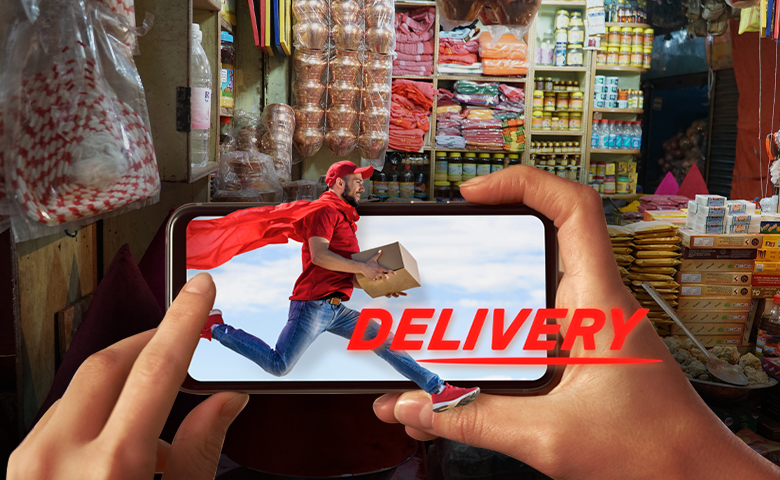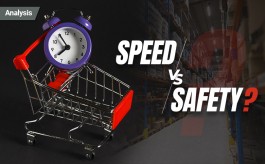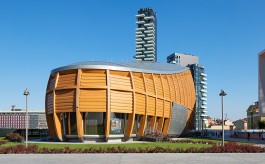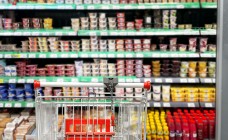Zepto says QC not impacting kiranas, but what’s the real scenario?
By N Jayalakshmi | December 03, 2024
Aadit Palicha, Zepto’s CEO and Co-Founder, has reportedly countered allegations about quick commerce negatively impacting the growth of traditional kirana stores. But there are other reports that point to just the opposite scenario. The reality possibly lies somewhere in between and points to a greater need for strategic, mutually beneficial collaborations and co-existence in the whole eco-system.

Leading quick commerce player Zepto has announced that it is well on its way to becoming a full Indian-owned entity and all set to hit “PAT positive milestone” according to a PTI report.
The company, which has just received USD 350 million funding from marquee domestic investors, has also indicated the possibility of an IPO in 2025.
While highlighting aspects like job creation and value generation in the eco-system, Zepto’s CEO and Co-Founder, Aadit Palicha, has reportedly countered allegations about quick commerce (QC) negatively impacting the growth of traditional kirana stores.
According to Aadit, the claims of quick commerce model disrupting and stunting the growth of traditional kirana stores is not based on real data. "It is economically impossible that the kirana store is shrinking... We are growing but so are the kirana stores, and so are other formats of commerce," he is reported to have said. He also highlighted the scale at which the quick commerce operates for groceries and essentials, especially in India and active role played by Indian technology.
Meanwhile, the All India Consumer Products Distributors Federation (AICPDF) had recently announced that quick commerce’s rapid growth in India had led to around 200,000 kirana stores shutting down over the past year.
According to the federation,the sales at kirana stores during this festive season were remained stagnant and that metro cities had seen the highest impact from the rise of quick commerce, with 90,000 kirana stores closing in these areas alone. It said that in addition, 60,000 stores had closed in Tier-I cities, with another 50,000 shutting down across Tier-II and Tier-III cities.
The industry body added that customer visits to kirana stores had almost halved this year, compared to the past two to three years. Dhairyashil Patil, National President of AICPDF, was reported to have said that deep discounting and alleged predatory pricing were creating a challenging environment for traditional stores, and were compelling many traditional retailers to close.
It may be recalled that the shares of Avenue Supermarts, which runs DMart stores, had dropped over 8% due to a disappointing Q2 earnings, apparently impacted by Quick Commerce surge. Neville Noronha, CEO and MD of Avenue Supermarts was quoted as saying, "We clearly see the impact of online grocery formats, including DMart Ready, in large metro DMart stores which operate at a very high turnover per square feet of revenue." The company’s stock rating had been downgraded to ‘neutral; from ‘overweight’ by J P Morgan and among the reasons cited was the impact on operating margins from increased investment and Quick Commerce, the effect of which was seen to have been bigger in Q2.
There have also been reports of FMCG firms seeing demand uptick on quick commerce platforms. A recent Financial Express report showed that direct-to-customer brands had seen up to 250 per cent higher festive sales on QC platforms compared to the previous year.
According to a recent Mint report, FMCG brands may double their share of business from quick commerce in the near term as more companies use these platforms. The report cited findings by Elara Securities, according to which, the share of quick commerce sales for larger FMCG brands may double over the near term and the larger brands tend to make better margins on quick-commerce platforms vs e-commerce due to lower discounts on the former.
The report however added that traditional trade still yields the highest profitability for FMCG brands, followed by quick commerce. As per this report, “Quick commerce currently accounts for roughly 40% of digital sales (for direct-to-consumer brands), a figure expected to rise to 60% in the near future with e-commerce and modern trade turning costlier for FMCG brands than quick-commerce.”
Meanwhile, QC players like Zepto are looking to expand to over 50 cities by next quarter, taking its footprint over and beyond about two dozen cities right now. According to Aadit, the company was seeing "phenomenal results" with Zepto Café, the café service it launched almost two years ago. "We will get to Rs 1,000 crore business in Zepto Cafe alone...customers love it,”.
So the question remains: Will Quick Commerce kill India’s retail lifelong, the Kirana stores? Or will both co-exist, as we have seen with many other phenomena in recent times once both the hype and the paranoia surrounding a trend settled down. India as a market is vast enough for diverse eco-systems to co-exist. At the same time, with technology enabled interfaces becoming an integral to consumer lifestyles today, it’s just a matter of time, before quick commerce gains traction across Tier 3 and 4 and rural markets in the country and pose real threats to kiranas and small retailer.
The best way forward would possibly be for both to leverage each other’s strengths, as is already happening to some extent – kiranas becoming hubs for QC, leveraging the latter’s tech support to streamline operations and for QC players to piggy back on the Kirana store’s close understanding of local consumers. Meanwhile for the brands’, the number of avenues opening up to get closer to their customers is expanding like never before. They could possibly explore more opportunities of utilizing the strengths of retail solution providers and retail consultants to make their in-store experience more engaging and memorable for their customers. The retail solution providers for their part could possibly explore how they can collaborate with retail tech solution players and map out an integrated approach, bundling omnichannel solutions as part of their offerings.
Image Source: Freepik.com









Comments